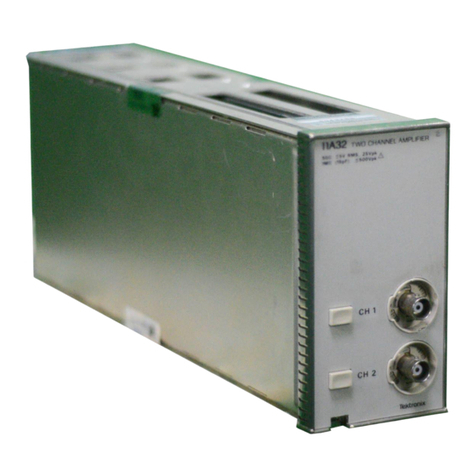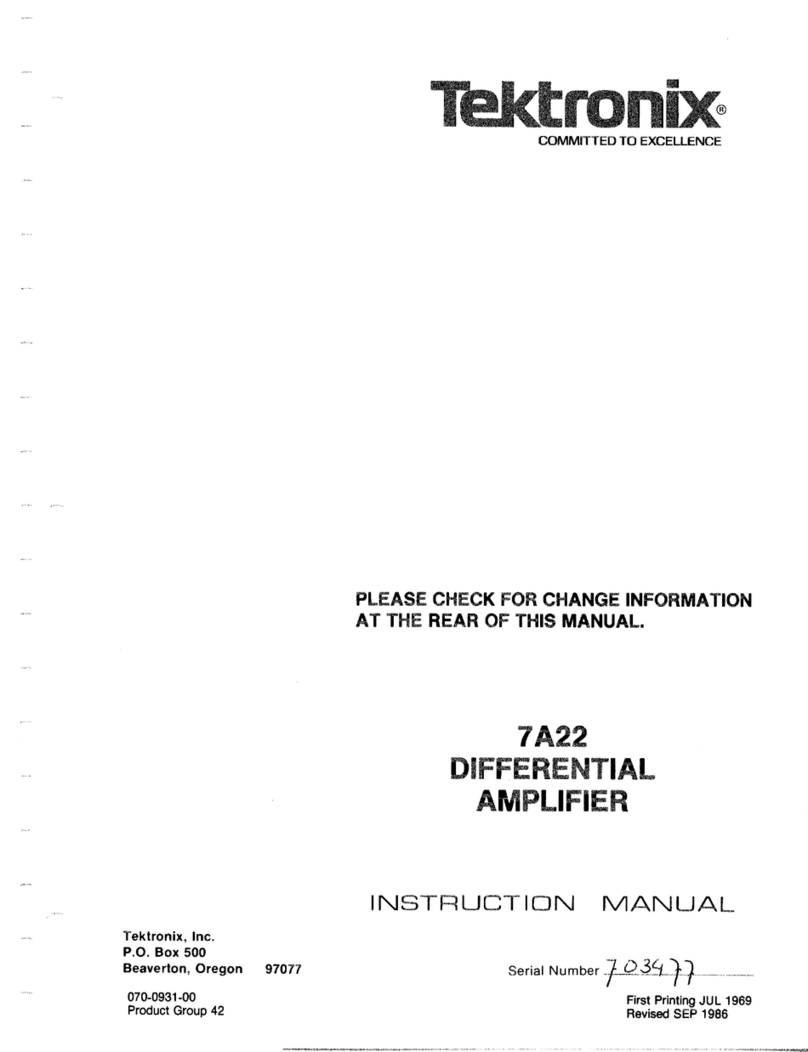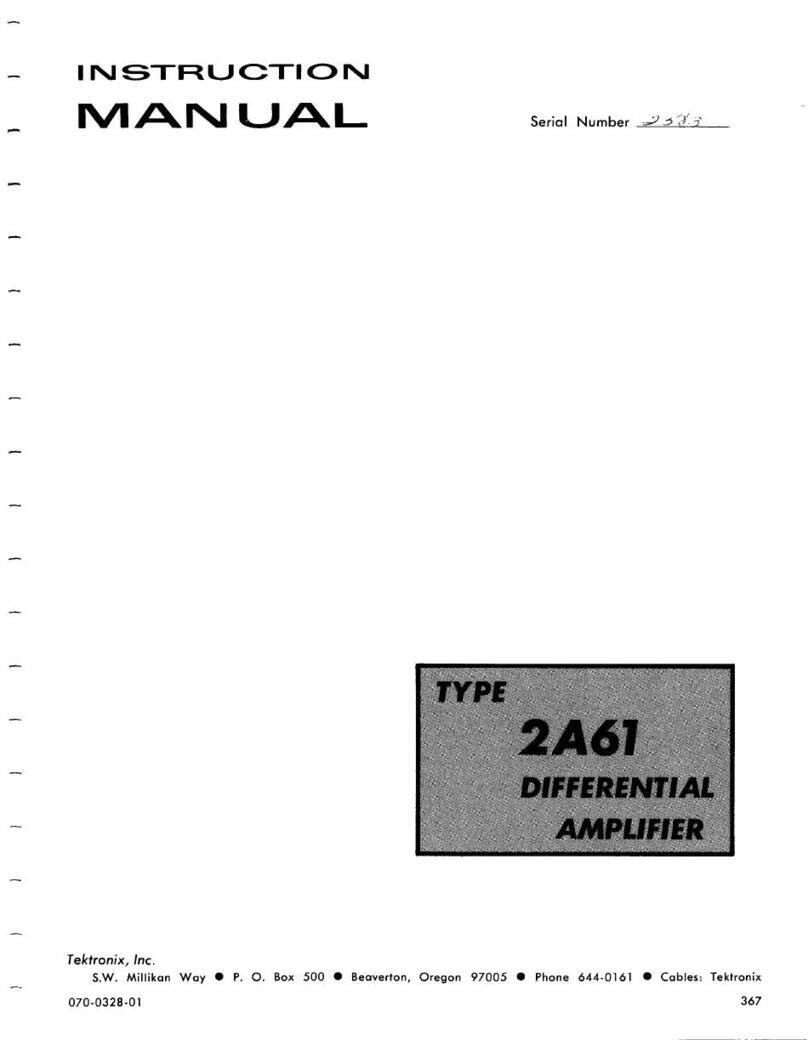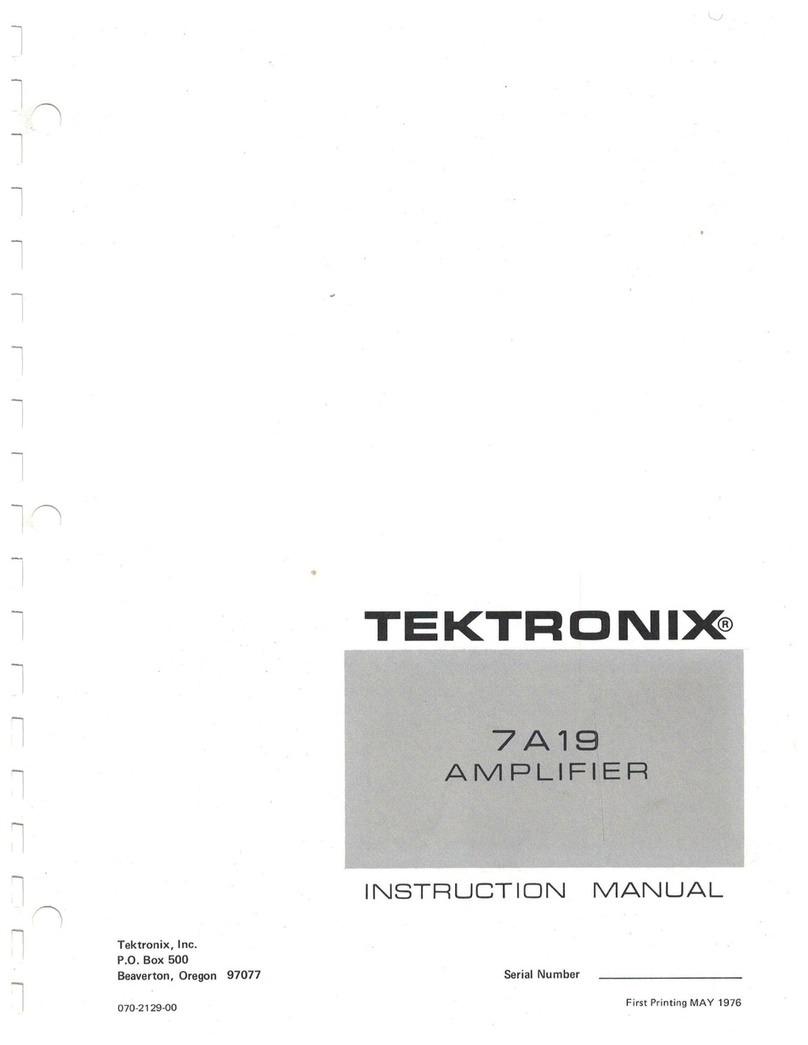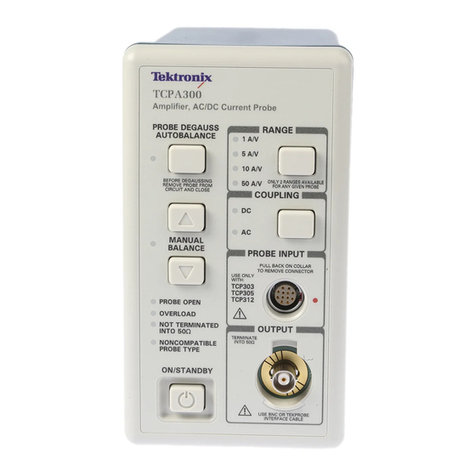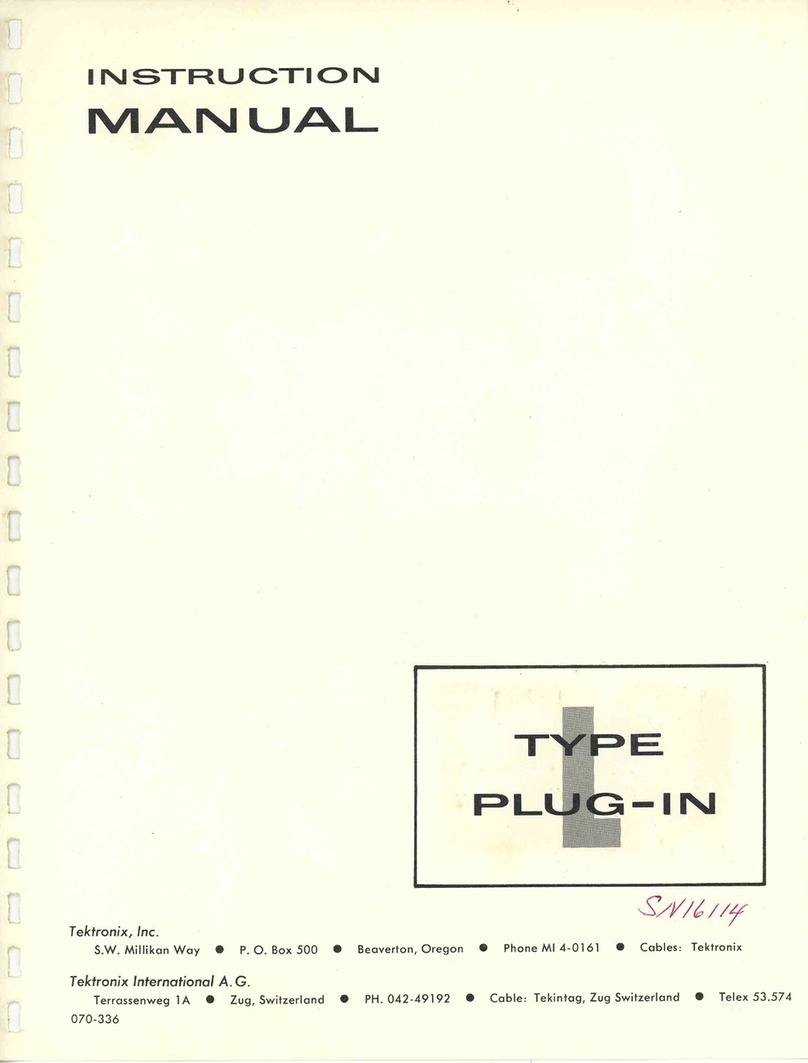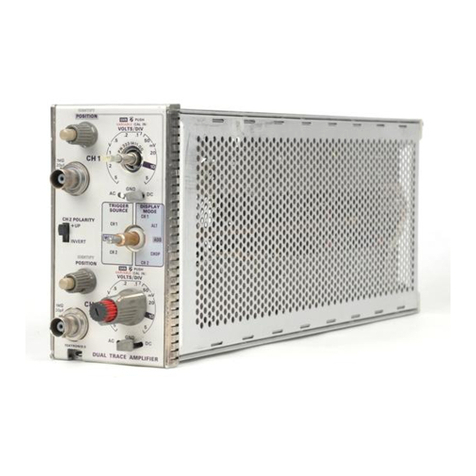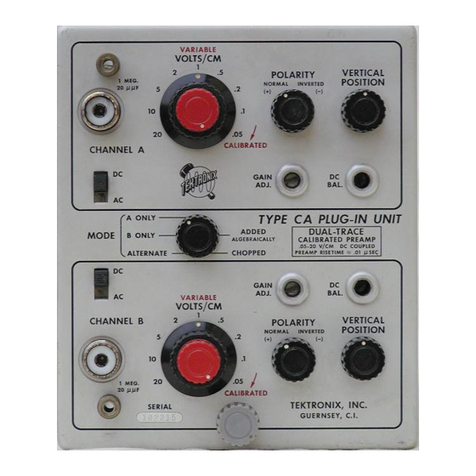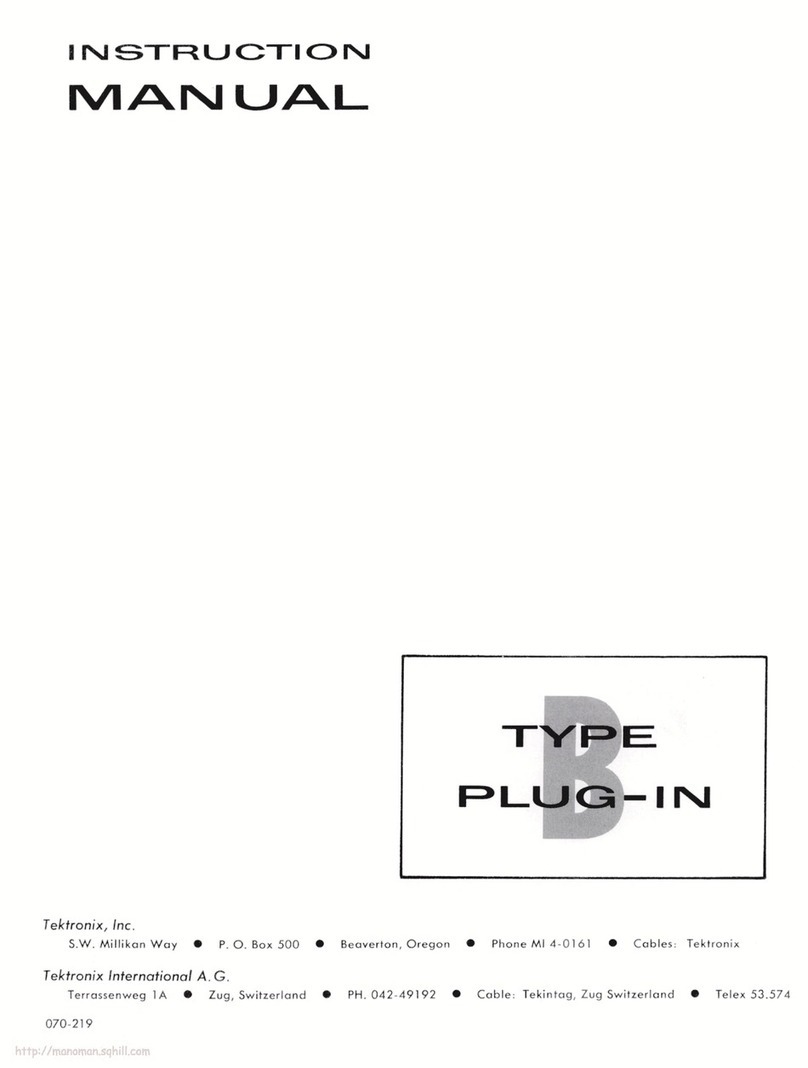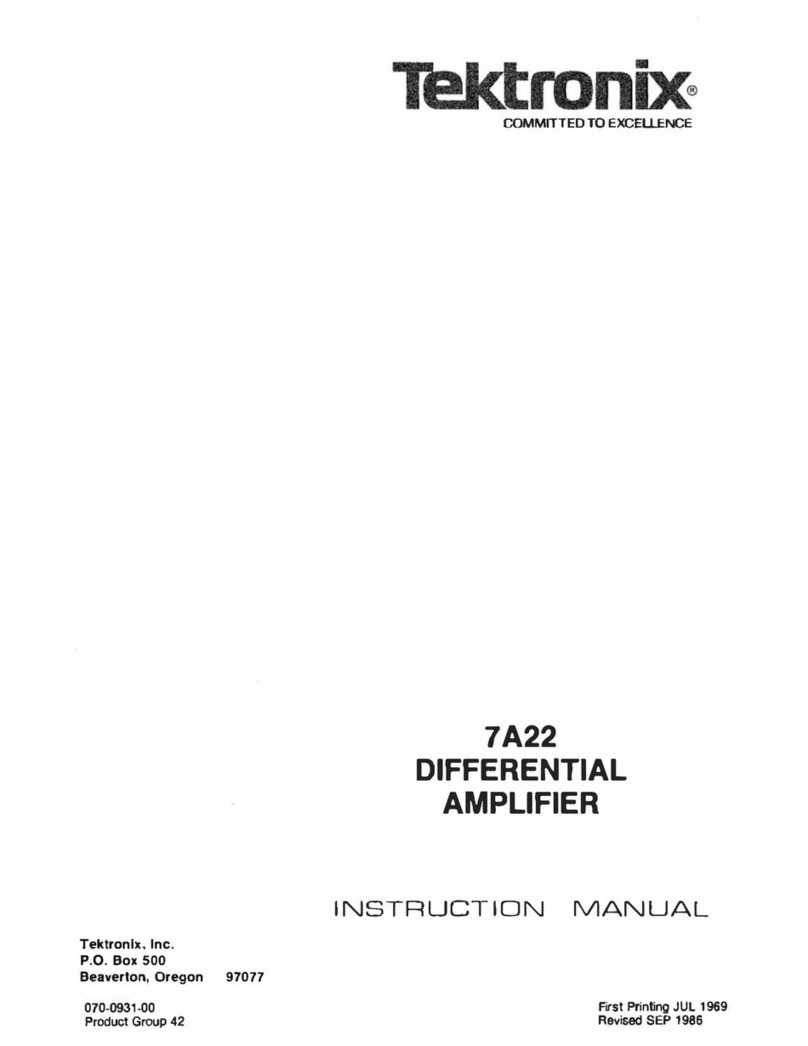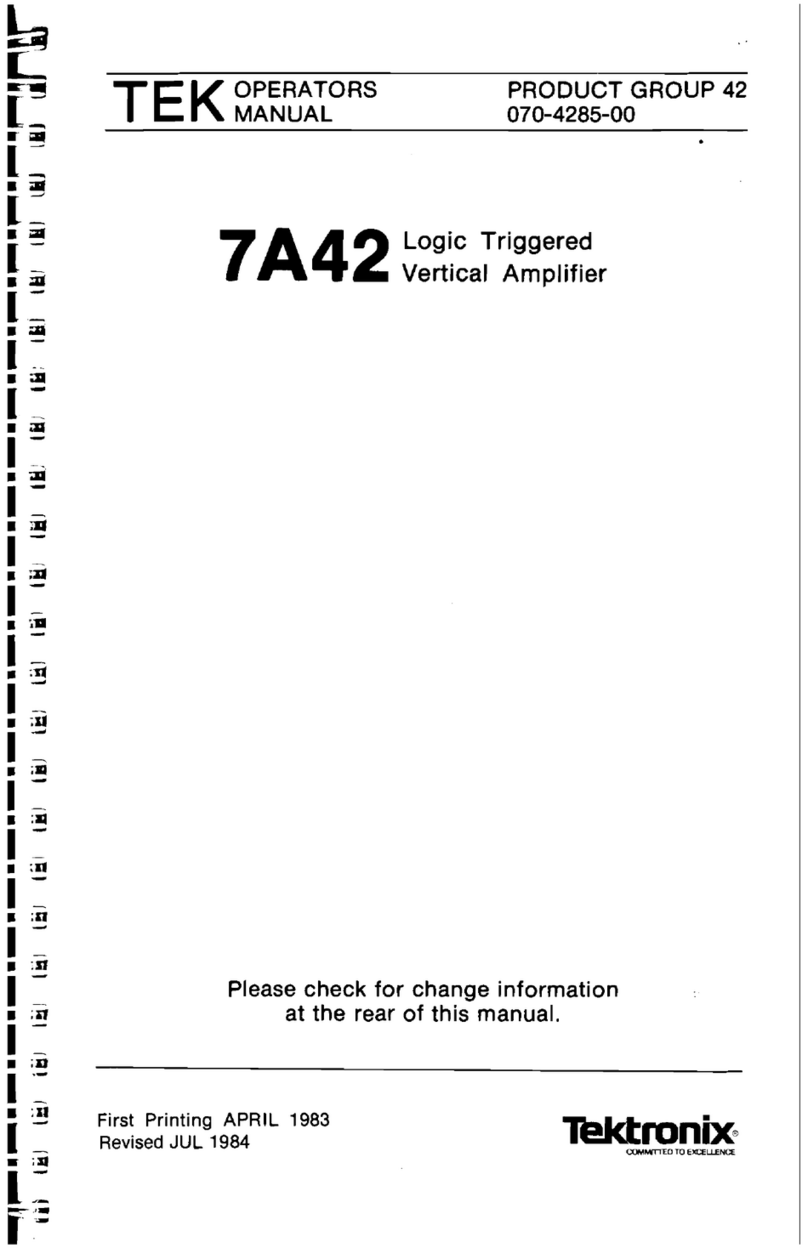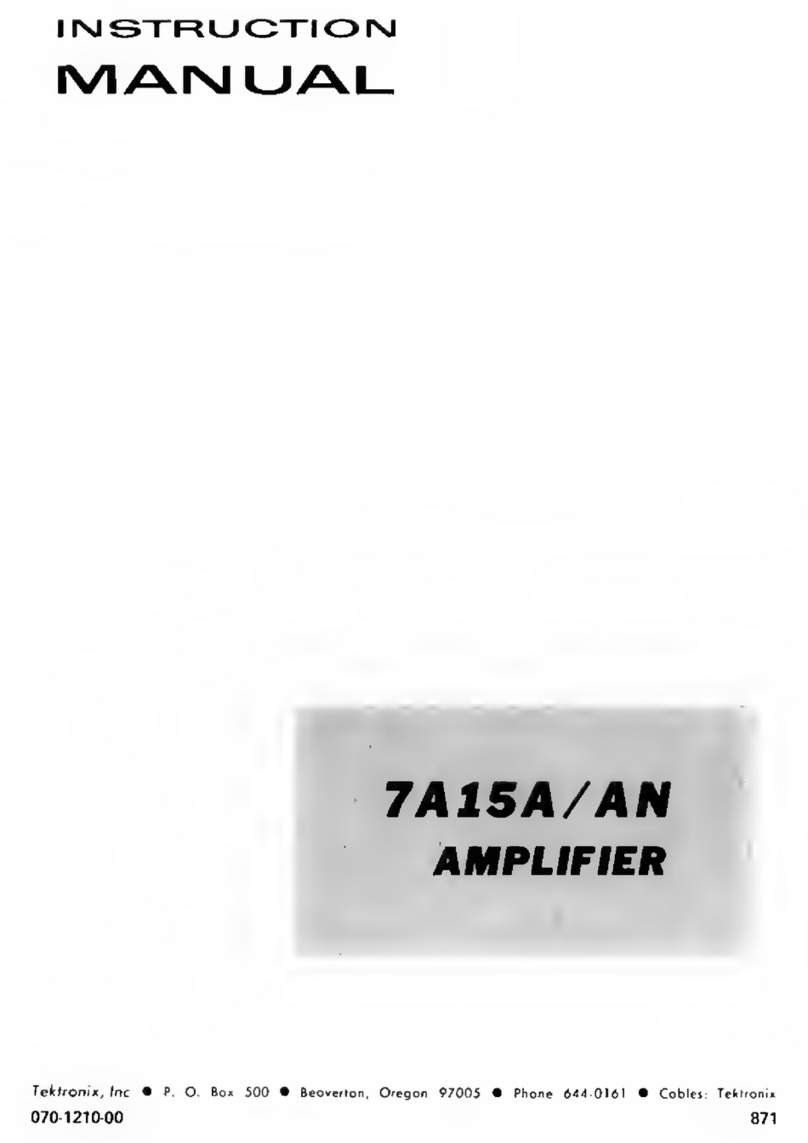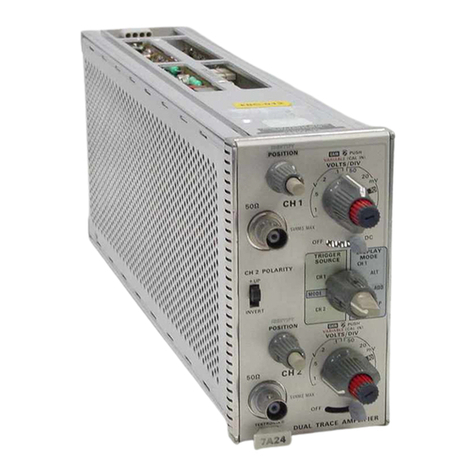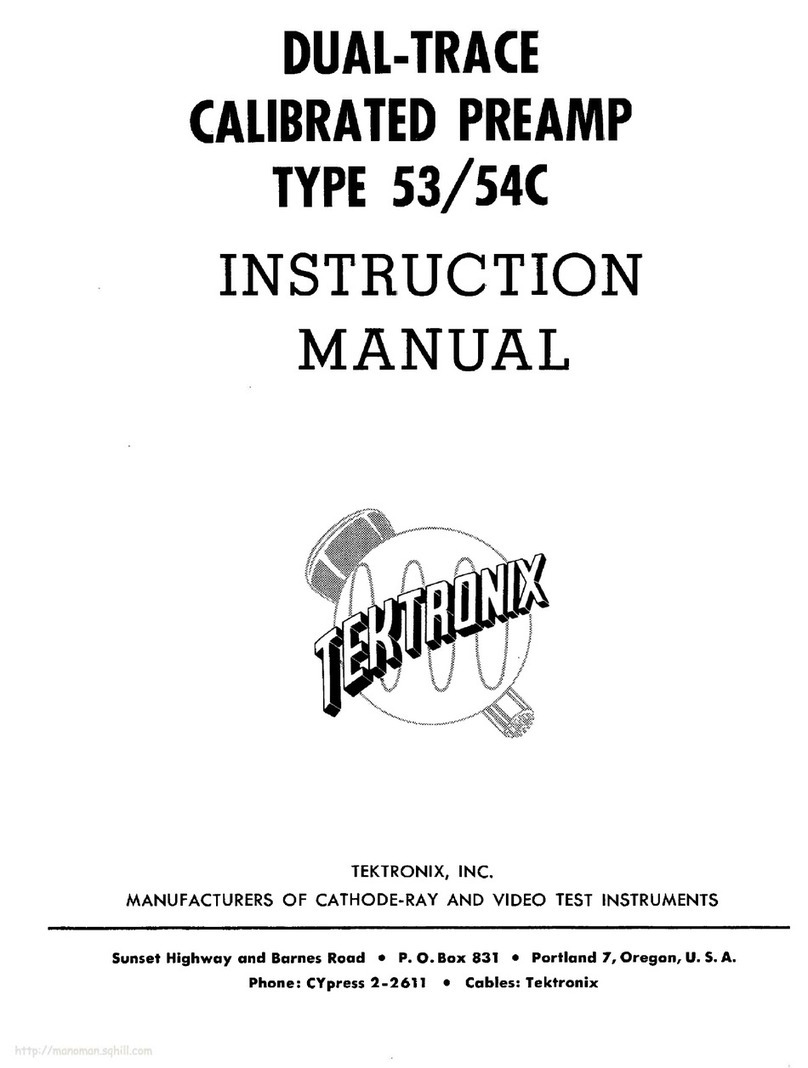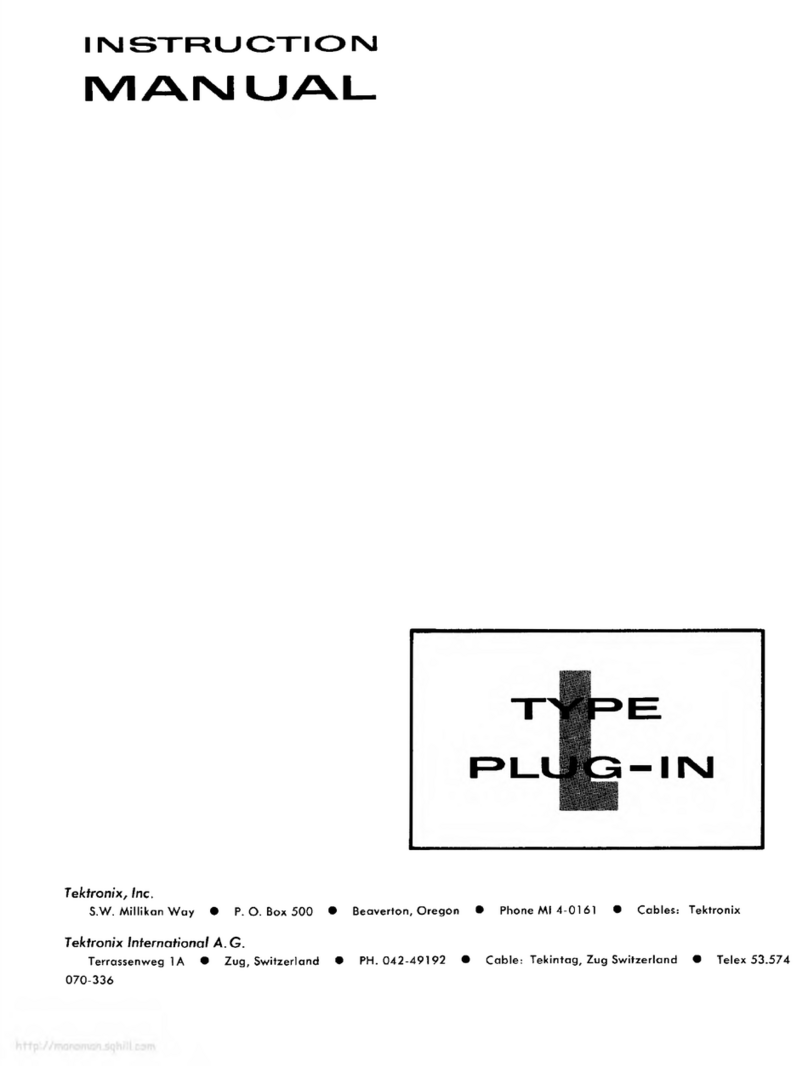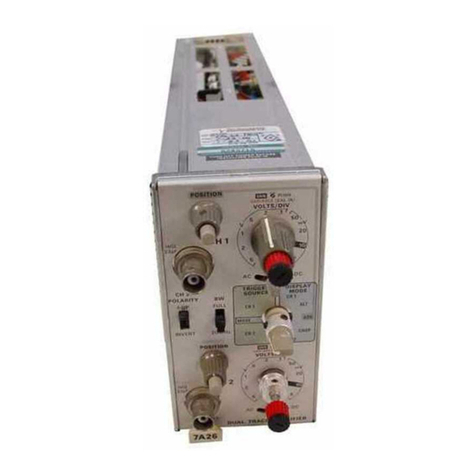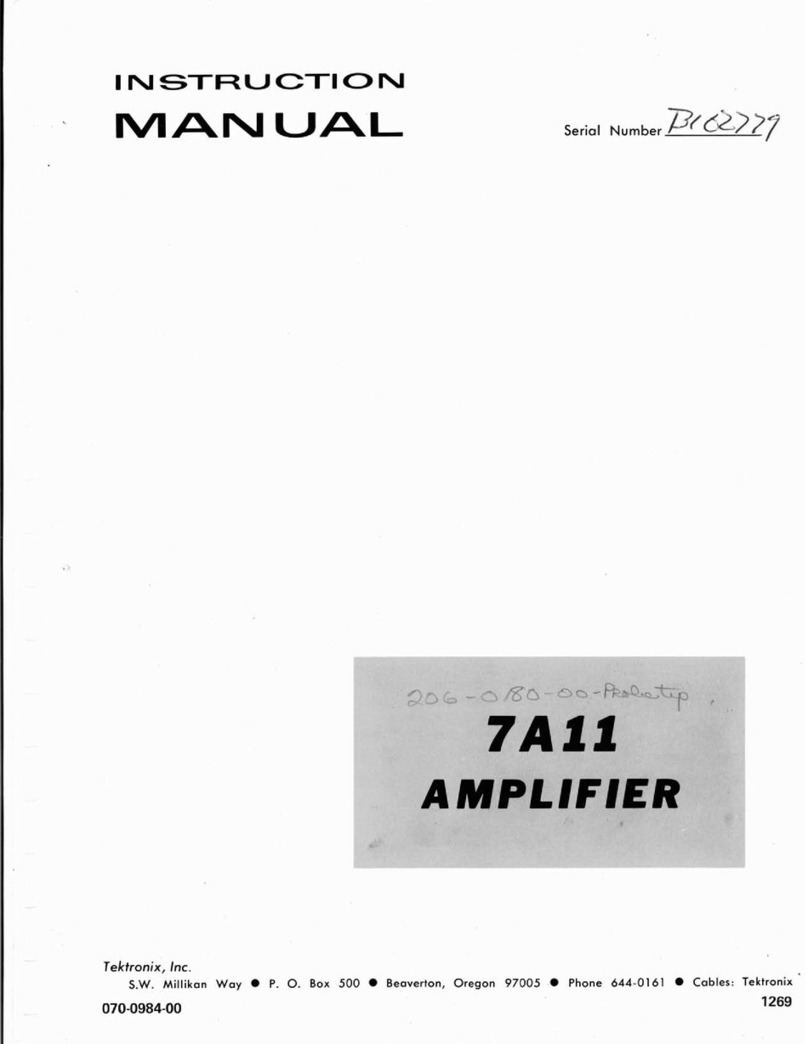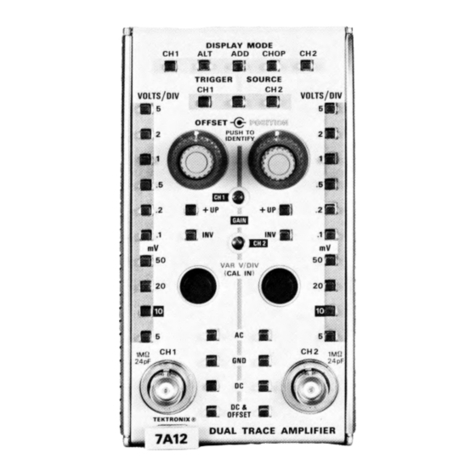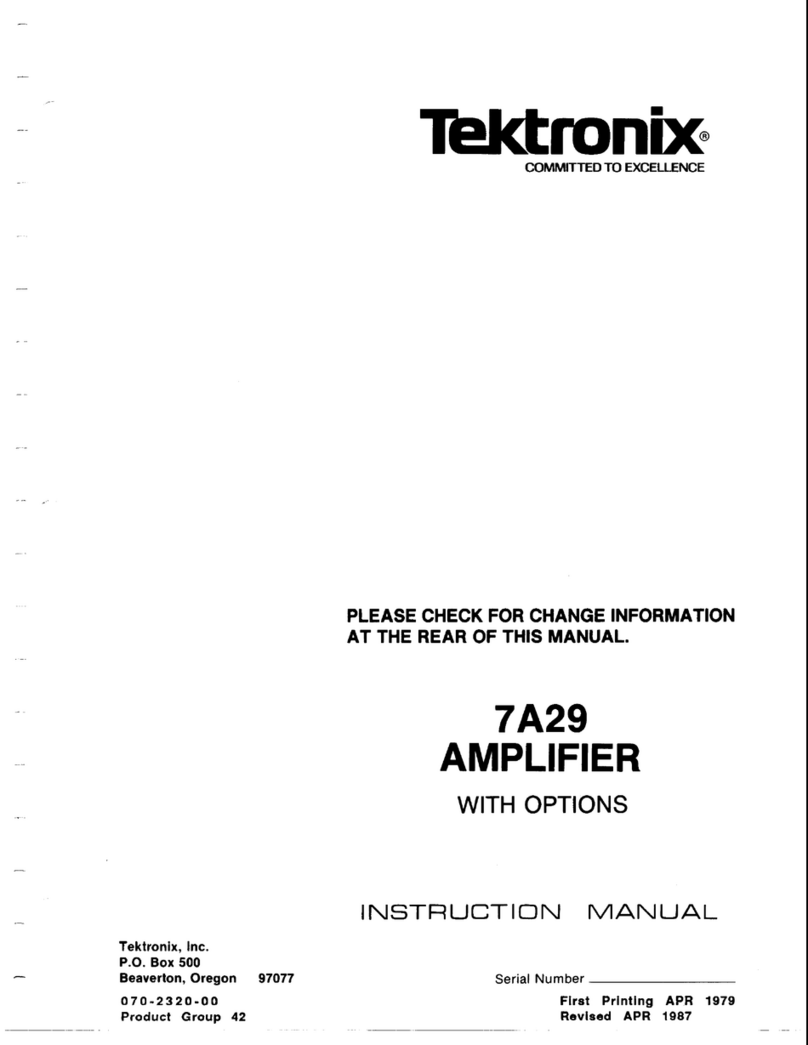
Operating Instructions— Type AA
ALTERNATE/CHOPPED Switch
For single-trace operation the ALTERNATE/CHOPPED
switch is inoperative and no electronic switching of the
channels occurs. For multi-trace operation the setting of
the ALTERNATE/CHOPPED switch is important. The best
setting to use depends on the repetition rate of the applied
signals and whether or not they are related in time to
each other.
In general, the ALTERNATE position is usually used with
sweep rates above 10/xsec and the chopped position with
lower sweep rates. The ALTERNATE position is useful for
observing unrelated or related signals of high repetition rate
(usually above 100 kc), observing fast transients, and making
phase and time-delay comparison measurements. The
CHOPPED position is most useful for observing related low-
frequency signals and for observing transients having a dura
tion as short as 0.5 millisecond.
When determining the best mode of operation to use in
a particular application, it is also necessary to choose the
best triggering method. In the discussion that follows, trig
gering methods are described in more detail.
Multi-Trace Triggering
Multi-trace triggering is divided into the following order:
(1) External triggering using ALTERNATE and CHOPPED
modes, (2) Internal triggering using ALTERNATE mode, and
(3) Internal triggering using CHOPPED mode.
External triggering using ALTERNATE and CHOPPED
modes. For multi-trace operation, it is usually best to trig
ger the time base with an external triggering signal which
bears a fixed time relationship to the applied signals. A
convenient source for obtaining the external trigger signal
is from the "A " SIGN AL OUT connector. With an external
triggering signal a stable display is more easily obtained
and the true time or phase relationship between input sig
nals can be determined.
To trigger from the channel A signal, simply connect a
test lead between the “ A" SIGNAL O UT connector on the
M Unit and the Trigger Input connector on the oscilloscope.
Then set the oscilloscope triggering controls for external
triggered-sweep operation. To obtain a stable display, the
signals applied to the other channels must be related in
frequency to the channel A signal.
If the trigger signals have components above 10 kc, use
the AC Fast or AC LF Reject triggering mode (if your oscil
loscope has these positions). For lower frequency signals,
use the A C or AC Slow triggering mode.
Internal triggering using ALTERNATE mode. If the time
or phase relationship between signals is not critical, you
can use internal triggering of the time base when the
ALTERNATE/CHOPPED switch is set to ALTERNATE. In
this mode of operation, the signals applied to the indi
vidual channels can be either related or unrelated in fre
quency. The oscilloscope Triggering Level control must be
set at a point where the sweep will trigger on the display
having the lowest amplitude. If the signals have components
above lOkc, use the AC Fast or AC LF Reject triggering
mode (if your oscilloscope has these positions). For lower
frequency signals, use the AC or AC Slow triggering mode.
In the AC Fast or AC LF Reject position, an rc filter is in
serted into the trigger-input circuit of the oscilloscope which
allows it to recover quickly from the dc level changes en
countered with ALTERNATE sweep.
Internal triggering using CHOPPED mode. For multi-trace
CHOPPED mode of operation, internal triggering should not
be used unless the input signals are related to the chopped
switching rate. If the signals are not related to the chopping
rate, the sweep will try to trigger on the switching wave
form rather than on the applied signals and will result in
an unstable display. To obtain stable displays, externally
trigger the sweep from the channel A signal. To do this,
use the "A" SIGN AL OUT connector and set the oscillo
scope controls for external triggered-sweep operation.
DC Balance Adjustments
After the M Unit has been in use for a period of time,
the trace may change position as the VAR. GAIN control
is rotated. This is caused by slight changes in the operating
characteristics of components in the M-Unit amplifier stages
and resultant shift in operating potentials. To correct this
condition in one or all channels proceed as follows:
1. Set the front-panel controls of the channel to be dc-
balanced to these settings:
VOLTS/CM Any position
MODE DC NORM, or AC NORM.
VAR. GAIN CALIB.
POSITION Centered
ALTERNATE/CHOPPED ALTERNATE
2. Set the oscilloscope sweep rate and triggering controls
for a 0.5-millisec/cm free-running sweep.
3. With the POSITION control, position the trace to approx
imate center of the graticule.
4. Set the DC BAL. adjustment to the point where there is
no trace shift on the crt as the VAR. G AIN control
is rotated.
Gain Adjustments
The gain adjustments should be checked periodically to
assure correct vertical deflection factors, particularly when
the M Unit is transferred from one oscilloscope to another.
The following procedure describes a method for setting the
gain of each channel when the M Unit is used with an
oscilloscope having 4 centimeters of vertical scan. If the
vertical scan of your oscilloscope is greater than 4 centi
meters, use 100 millivolts from the oscilloscope calibrator
and set the gain for a vertical deflection of exactly five
centimeters. In other respects the procedure for setting the
gain is the same.
To check the gain of each channel:
2-4
